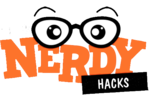The Most In-Demand Programming Languages of 2017
The tech sector is booming. If you’ve used a smartphone or logged on to a computer at least once in the last few years, you’ve probably noticed this.
As a result, coding skills are in high demand, with programming jobs paying significantly more than the average position. Even beyond the tech world, an understanding of at least one programming language makes an impressive addition to any resumé.
Do a simple web search and you’ll find there are hundreds of programming languages in existence. Do another search for the most popular ones and again, you’ll come up with a head-spinning list. To be as objective as possible, we’re examining the top programming languages from a career perspective.
There are many ways to rank programming languages, like the number of websites built with them, Google search results, GitHub projects or StackOverflow questions. We pored through data from job search engine for the number of job postings that contained the name of a programming language.
We’ve compiled a list of the most sought-after programming languages to get you up to speed.
1.SQL
 The number of Indeed job descriptions including SQL (Structured Query Language) increased by nearly 50,000 this year over last year, giving SQL a dramatic lead over the other languages. It’s unclear if this is entirely due to more SQL jobs in the market or a change in how Indeed works. Either way, SQL is still the clear leader in our analysis. SQL is used to communicate with and manipulate databases. It is extremely common, with many variations like MySQL and Microsoft SQL. Microsoft released SQL Server 2016 in the past year, which proved to be surprisingly popular and introduced several new features to make the language more open-source like integration with R, the popular data analysis programming language, and a Linux version.
The number of Indeed job descriptions including SQL (Structured Query Language) increased by nearly 50,000 this year over last year, giving SQL a dramatic lead over the other languages. It’s unclear if this is entirely due to more SQL jobs in the market or a change in how Indeed works. Either way, SQL is still the clear leader in our analysis. SQL is used to communicate with and manipulate databases. It is extremely common, with many variations like MySQL and Microsoft SQL. Microsoft released SQL Server 2016 in the past year, which proved to be surprisingly popular and introduced several new features to make the language more open-source like integration with R, the popular data analysis programming language, and a Linux version.2. Java
It is a class-based, object-oriented programming language developed by Sun Microsystems in the 1990s. It’s one of the most in-demand programming languages, a standard for enterprise software, web-based content, games and mobile apps, as well as the android system. Java is designed to work across multiple software platforms, meaning a program written on Mac OS X, for example, could also run on Windows.
3. C++
 C++ grew by about 20,000 job postings over 2016. Built on C, the grandfather of all programming languages, C++ is a powerful, high-performance language used to build system software, games engines and desktop and web apps. Many beginners find C++ harder to learn than dynamically typed languages like Python or JavaScript.
C++ grew by about 20,000 job postings over 2016. Built on C, the grandfather of all programming languages, C++ is a powerful, high-performance language used to build system software, games engines and desktop and web apps. Many beginners find C++ harder to learn than dynamically typed languages like Python or JavaScript.4. C#
“C Sharp” saw a small increase in popularity in 2017, but not enough to keep it from falling behind C++. The language was developed for Microsoft’s.NET software framework and can now be used on non-Windows machines since the release of the.NET Core open-source development platform in June 2016. Its main use is building Microsoft enterprise software. Most of the features in C# 7.0 were released last year, including language support for Tuples, local functions, pattern matching and much more.
5. Perl
6. iOS Family
7. PHP
PHP stayed in the same place in our rankings from 2016 to 2017 with little change in popularity. It’s a server-side programming language used on more than 80 percent of websites today including Facebook, Wikipedia, Tumblr, and WordPress. It wasn’t the buzziest language in 2016, but the sheer number of websites still built with it ensure it’s still a useful skill for developers, especially when paired with Javascript and SQL.
8. Python
Python is a high-level, server-side scripting language for websites and mobile apps. It’s considered a fairly easy language for beginners due to its readability and compact syntax, meaning developers can use fewer lines of code to express a concept than they would in other languages. It powers the web apps for Instagram, Pinterest through its associated web framework Django, and is used by Google, Yahoo! and NASA.
9. JavaScript
 JavaScript is a client and server-side scripting language developed by Netscape that derives much of its syntax from C. It can be used across multiple web browsers and is considered essential for developing interactive or animated web functions. It is also used in game development and writing desktop applications. JavaScript interpreters are embedded in Google’s Chrome extensions, Apple’s Safari extensions, Adobe Acrobat and Reader, and Adobe’s Creative Suite.
JavaScript is a client and server-side scripting language developed by Netscape that derives much of its syntax from C. It can be used across multiple web browsers and is considered essential for developing interactive or animated web functions. It is also used in game development and writing desktop applications. JavaScript interpreters are embedded in Google’s Chrome extensions, Apple’s Safari extensions, Adobe Acrobat and Reader, and Adobe’s Creative Suite..





